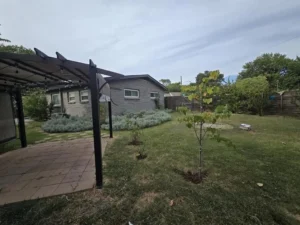Introduction to Remote Work Impact on Dallas Housing Trends
The impact of remote work on Dallas housing trends in 2024 is multifaceted and transformative. Dallas Remote Work Trends are reshaping preferences and influencing real estate dynamics. The flexibility of remote work prompts individuals to seek homes with home offices or co-working spaces. This shift in priorities is driven by work-from-home arrangements. Increased demand for properties with high-speed internet and dedicated work areas reflects this trend.
The surge in housing prices, both in Dallas and nationally, is significantly due to remote work. Remote work expands options for homebuyers, allowing them to choose locations based on lifestyle preferences, not proximity to workplaces. This shift has increased competition in real estate markets, especially in Dallas-Fort Worth. Remote work-supportive amenities and community infrastructure have become key selling points. Consequently, remote work has substantially impacted housing costs, with no signs of abating. Remote work remains a prevalent feature of the modern work landscape.
Predictions for Remote Work Impact on Dallas Housing Trends
In 2024, remote work will significantly influence Dallas housing trends. Remote work will shape migration patterns, making Dallas a desirable location. The city’s affordability and quality of life attract remote workers. The absence of state income tax in Texas and a lower cost of living compared to other major cities are major draws. This impacts housing preferences and choices.
A potential slowdown in the Texas real estate market, if remote work options decrease, is a concern. Changes in remote work policies can impact housing demand and pricing dynamics. This affects the overall real estate landscape in Dallas. As organizations navigate post-pandemic work structures, hybrid work models will shape relocation decisions. This influences housing needs for individuals and households in Dallas. The shift towards hybrid work will lead to adjustments in housing requirements. Flexibility and adaptability will become key in the housing market to accommodate evolving work patterns.
Analysis of Cost of Living Changes in Dallas for 2024
In 2024, the cost of living in Dallas will be influenced by various factors. Remote work dynamics will play a significant role in housing affordability. As companies adopt hybrid work models, the housing market in Dallas may see demand and pricing fluctuations. This will reflect the changing needs of employees and employers.
Rising interest rates will also impact housing affordability in Dallas. As interest rates fluctuate, mortgage and loan accessibility will vary. This will directly affect the housing market’s dynamics and pricing structures in the region. The interplay between interest rates, remote work trends, and housing affordability creates a complex picture. Real estate stakeholders must remain adaptable and responsive to these evolving influences.
Factors Influencing Dallas Housing Market in 2024
Population growth in Dallas is robust and diverse. Many remote workers are attracted by its quality of life and affordability. Consequently, this demographic shift is reshaping the housing market, creating varied demands for different property types. Therefore, developers and real estate agents are adapting their strategies to cater to this evolving mix of buyers. This, in turn, influences the types of properties available and their pricing.
Additionally, housing supply and demand imbalances affect the Dallas housing market. The growing demand and limited supply pressure prices, making homeownership less affordable for many. For instance, this trend is pronounced in desirable neighborhoods and areas with limited new construction. Thus, bidding wars and quick sales have become commonplace. Therefore, policymakers and real estate professionals are exploring ways to increase housing supply. Initiatives include zoning changes and incentives for developers to build more affordable housing units.
Moreover, government policies significantly impact the Dallas housing market. Federal and state regulations addressing housing affordability and access shape the landscape for buyers and sellers. Consequently, initiatives promoting affordable housing, reducing homeownership barriers, and ensuring fair housing practices influence market dynamics and pricing trends. Therefore, real estate stakeholders in Dallas are monitoring these policy developments closely. This helps them navigate the evolving housing market successfully and ensure sustainable growth in the coming years.
Role of Remote Work in Dallas Real Estate Trends
The influx of remote workers to Dallas Fort Worth has greatly impacted the local real estate market. As more individuals choose remote work, they seek locations like Dallas for its high quality of life. Affordable housing options and tax benefits add to its appeal. For instance, professionals from high-tax states may find Dallas attractive due to its lack of state income tax. This allows them to keep more of their earnings.
The rise in remote work has also increased the population in Dallas-Fort Worth. This has driven the demand for specific amenities in rental properties. Landlords and property managers now focus on providing features like high-speed internet access and smart home technology. Pet-inclusive policies are also important to remote workers who value these offerings in their living spaces. This shift in preferences highlights the need to understand and adapt to the evolving demands of remote workers in real estate. Remaining competitive in the market requires this adaptability.
Key Takeaways on Remote Work and Dallas Housing
Adapting to remote work trends is crucial for the real estate sector in Dallas. Therefore, maintaining growth and competitiveness in 2024 is essential. As remote work continues to influence housing preferences and migration patterns, real estate stakeholders must stay ahead. Consequently, this ensures they meet the changing demands of homebuyers and renters. For example, neighborhoods with access to high-speed internet and co-working spaces are becoming more desirable. Additionally, remote workers seek environments conducive to their work-from-home lifestyle.
Aligning strategies with the evolving remote work landscape is crucial for real estate players in Dallas. By understanding the impact of remote work on housing choices and affordability, stakeholders can tailor their offerings. This approach helps meet the needs of this growing segment of the workforce. For instance, developers might integrate smart home technology or create green spaces within residential communities. Thus, attracting remote workers looking for modern amenities and a better work-life balance.
The continuous influence of remote work on housing prices and rental costs requires staying informed and agile. This is key for Dallas real estate professionals. By monitoring trends in the market and being prepared for potential shifts in demand, stakeholders can position themselves advantageously. For instance, tracking remote work statistics and understanding their correlation with housing market fluctuations can provide valuable insights. Consequently, this aids in decision-making and strategic planning in the dynamic real estate landscape of Dallas.




















